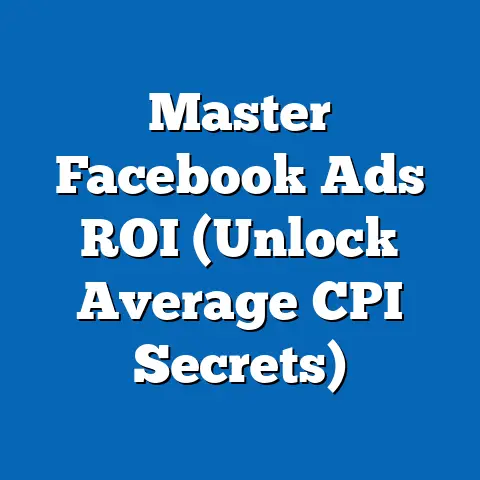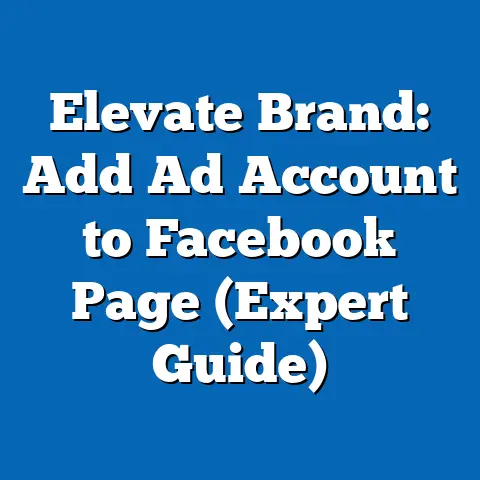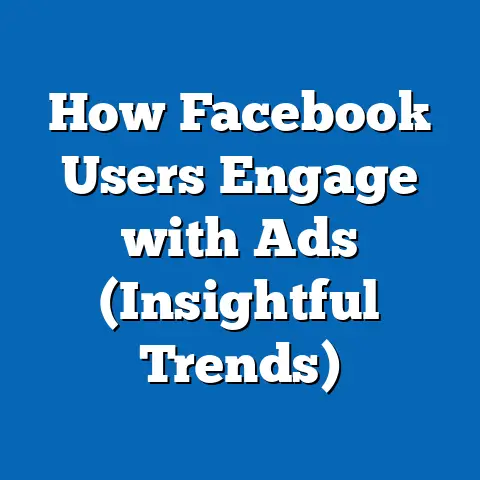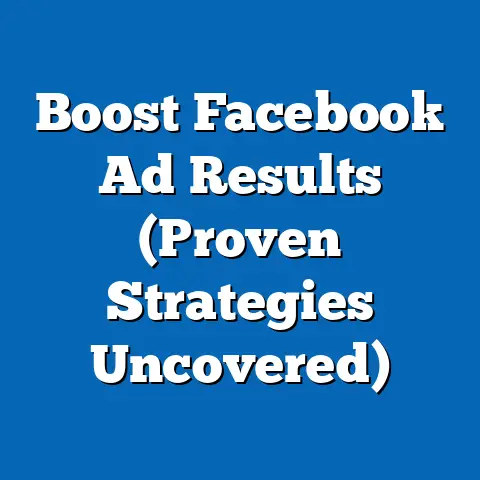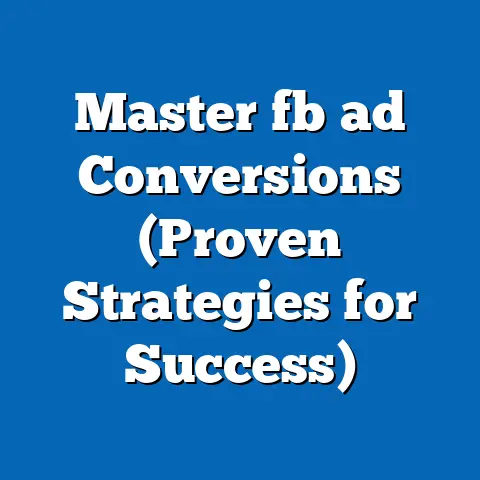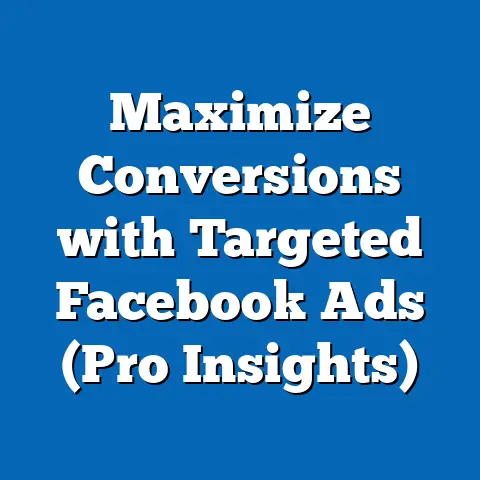Boost Dealership Leads with Effective Facebook Ads (Pro Strategies)
I’ve spent years helping businesses navigate the ever-changing landscape of digital marketing, and one thing remains constant: Facebook advertising, or Meta advertising as it’s known today, when done right, can be a game-changer. But in today’s world, simply selling cars isn’t enough. Consumers, especially those interested in new vehicles, are increasingly environmentally conscious. They’re looking for dealerships that not only offer great cars but also reflect their values of sustainability. This means the old playbook of flashy ads and aggressive sales tactics needs a major overhaul.
The automotive industry is undergoing a massive transformation, with electric vehicles (EVs) and hybrid models gaining significant traction. According to recent reports, the demand for EVs is projected to grow exponentially in the next decade, driven by environmental concerns and advancements in battery technology. Dealerships that adapt to this shift and promote sustainable practices are more likely to capture the attention of modern buyers.
That’s where Facebook advertising comes in. It’s not just about showing off your latest models; it’s about crafting a narrative that resonates with eco-conscious consumers. It’s about highlighting your dealership’s commitment to sustainability, showcasing your range of eco-friendly vehicles, and demonstrating how you’re contributing to a greener future.
In this article, I’m going to dive deep into pro strategies that are specifically designed for car dealerships looking to supercharge their lead generation through Facebook advertising. I’ll show you how to align your campaigns with the theme of sustainability, reach the right audience, and measure your success. This isn’t just about selling cars; it’s about building a brand that stands for something more.
Understanding Your Audience
One of the biggest mistakes I see dealerships make is treating all potential customers the same. You can’t just throw a generic ad out there and hope it sticks. You need to understand who you’re trying to reach, what motivates them, and what kind of message will resonate with them.
Defining Your Target Demographic
Identifying your ideal customer is the first crucial step. Who are they? Where do they live? What do they do for a living? More importantly, what are their values and beliefs?
For dealerships focusing on sustainable vehicles, consider the following:
- Age: Millennials and Gen Z are generally more environmentally conscious than older generations. However, don’t discount older demographics who are also becoming increasingly aware of environmental issues.
- Income Level: Eco-friendly vehicles often come with a higher price tag, so you’ll likely be targeting customers with a higher disposable income. However, as EVs become more affordable, this is starting to change.
- Environmental Consciousness: This is the key factor. Look for people who are interested in environmental issues, follow environmental organizations, and support sustainable businesses.
- Lifestyle: Are they outdoor enthusiasts? Do they live in urban areas with a focus on sustainability? These factors can influence their vehicle preferences.
The rise of electric and hybrid vehicles is changing the demographics of car buyers. It’s no longer just early adopters and tech enthusiasts who are interested in EVs. Mainstream consumers are starting to see the benefits of electric vehicles, including lower running costs and reduced emissions. This means your target audience is expanding, and you need to adapt your messaging accordingly.
Creating Buyer Personas
Once you have a general understanding of your target demographic, it’s time to create detailed buyer personas. These are fictional representations of your ideal customers, based on research and data about your existing customers and potential leads.
Here’s an example of a buyer persona for a dealership selling electric vehicles:
Name: Sarah Miller
Age: 35
Occupation: Marketing Manager
Income: $80,000
Location: Urban area with a strong focus on sustainability
Values: Environmentally conscious, values sustainability, interested in reducing her carbon footprint
Motivations: Wants a reliable and fuel-efficient car that is also environmentally friendly
Pain Points: Concerned about the range of electric vehicles, hesitant about the upfront cost, unsure about charging infrastructure
Facebook Interests: Electric vehicles, environmental organizations, sustainable living, renewable energy
By creating detailed buyer personas like Sarah, you can better understand your target audience’s needs, motivations, and pain points. This will help you craft ad content and messaging that resonates with them. For example, you might create an ad that addresses Sarah’s concerns about the range of electric vehicles by highlighting the latest advancements in battery technology.
Takeaway: Understanding your audience is paramount. Define your target demographic, create detailed buyer personas, and use this information to guide your ad content and messaging.
Crafting Compelling Ad Content
Now that you know who you’re trying to reach, it’s time to create ad content that grabs their attention and motivates them to take action. This is where creativity and strategic messaging come into play.
Sustainable Messaging
In today’s market, sustainability isn’t just a buzzword; it’s a core value for many consumers. Your ad content should reflect this by highlighting the environmental benefits of your eco-friendly vehicles and dealership practices.
Here are some tips for crafting sustainable messaging:
- Focus on the Environmental Benefits: Emphasize the reduced emissions, fuel efficiency, and overall environmental impact of your eco-friendly vehicles.
- Highlight Dealership Initiatives: Showcase your dealership’s commitment to sustainability, such as using renewable energy, reducing waste, and supporting local environmental organizations.
- Use Data and Statistics: Back up your claims with data and statistics. For example, you might mention that electric vehicles produce zero tailpipe emissions or that your dealership has reduced its carbon footprint by a certain percentage.
- Tell a Story: Don’t just list the features and benefits of your vehicles; tell a story that connects with your audience on an emotional level. For example, you might tell the story of a customer who switched to an electric vehicle and is now enjoying a cleaner, greener lifestyle.
I’ve seen countless ads that simply list the features of a car without addressing the underlying values of the target audience. These ads often fall flat. The key is to connect with your audience on an emotional level by highlighting the things they care about.
Here are a few examples of successful ads that have effectively communicated sustainability:
- Tesla: Tesla’s ads often focus on the environmental benefits of electric vehicles, highlighting their zero-emission capabilities and contribution to a cleaner environment.
- Nissan: Nissan’s ads for the Leaf emphasize the car’s fuel efficiency and reduced carbon footprint, appealing to environmentally conscious consumers.
- Local Dealership Example: A local dealership ran a Facebook ad campaign highlighting its partnership with a local environmental organization. The ad featured images of the dealership’s employees volunteering at a local park cleanup event, showcasing their commitment to sustainability.
Visuals and Creative Elements
Visuals are a critical component of any successful Facebook ad campaign. High-quality images and videos can grab attention, convey your message, and motivate people to click.
Here are some tips for creating visuals that resonate with environmentally conscious consumers:
- Use High-Quality Images and Videos: Invest in professional photography and videography to showcase your vehicles in the best possible light.
- Showcase Nature: Incorporate natural elements into your visuals, such as green landscapes, blue skies, and clean air.
- Highlight the Technology: Showcase the innovative technology behind your eco-friendly vehicles, such as battery technology, regenerative braking, and solar panels.
- Tell a Story: Use visuals to tell a story that connects with your audience on an emotional level. For example, you might create a video that shows a family enjoying a road trip in their electric vehicle, highlighting the freedom and flexibility of sustainable transportation.
- User-Generated Content: Encourage customers to share photos and videos of themselves using your eco-friendly vehicles. This user-generated content can be incredibly powerful because it’s authentic and relatable.
I once worked with a dealership that was struggling to generate leads for their electric vehicles. We revamped their Facebook ad campaign by replacing the generic stock photos with high-quality images of their vehicles in scenic locations. We also created a short video that featured testimonials from satisfied customers. The results were dramatic. Lead generation increased by over 50% in just a few weeks.
Takeaway: Craft compelling ad content that highlights the environmental benefits of your vehicles and dealership practices. Use high-quality visuals and creative elements that resonate with environmentally conscious consumers.
Ad Targeting Techniques
Creating great ad content is only half the battle. You also need to make sure your ads are seen by the right people. This is where ad targeting comes in. Facebook offers a wide range of targeting options that can help you reach specific demographics, interests, and behaviors.
Utilizing Facebook’s Targeting Options
Facebook’s advanced targeting features allow you to reach specific demographics who are interested in sustainable vehicles.
Here are some targeting options to consider:
- Interests: Target people who are interested in electric vehicles, hybrid vehicles, renewable energy, sustainable living, environmental organizations, and related topics.
- Behaviors: Target people who have purchased eco-friendly products, donated to environmental organizations, or participated in environmental events.
- Demographics: Target people who are in your desired age range, income level, and location.
- Custom Audiences: Upload a list of your existing customers or website visitors to create a custom audience. This allows you to retarget people who have already shown an interest in your dealership.
Retargeting is a particularly effective strategy for potential leads who have engaged with previous ads or visited your dealership’s website. These people are already aware of your brand and are more likely to convert into customers.
Lookalike Audiences
Lookalike audiences are one of the most powerful targeting tools in Facebook’s arsenal. They allow you to find new leads who are similar to your existing customers.
Here’s how it works: You upload a list of your existing customers to Facebook. Facebook then analyzes the data and identifies the common characteristics of your customers, such as their demographics, interests, and behaviors. Facebook then creates a new audience of people who share these characteristics.
Here’s a step-by-step guide on setting up lookalike audiences on Facebook:
- Create a Custom Audience: Go to the Audiences section in Facebook Ads Manager and create a custom audience based on your existing customer list or website visitors.
- Create a Lookalike Audience: Select your custom audience as the source for your lookalike audience.
- Choose a Location: Select the location you want to target.
- Choose an Audience Size: Choose the size of your lookalike audience. A smaller audience will be more similar to your source audience, while a larger audience will be less similar.
- Create Your Audience: Click “Create Audience” to create your lookalike audience.
I’ve seen lookalike audiences consistently outperform other targeting options. By targeting people who are similar to your existing customers, you’re more likely to reach people who are interested in your products and services.
Takeaway: Utilize Facebook’s advanced targeting features to reach specific demographics interested in sustainable vehicles. Leverage retargeting to engage potential leads who have already shown an interest in your dealership. Use lookalike audiences to find new leads who are similar to your existing customers.
Budgeting and Ad Spend
Setting the right budget and choosing the right bidding strategy are critical for maximizing your ROI on Facebook advertising.
Setting a Realistic Ad Budget
Determining your ad spend should be based on previous lead generation results and sales goals.
Here are some factors to consider:
- Your Sales Goals: How many vehicles do you want to sell each month?
- Your Lead Generation Costs: How much does it cost you to generate a lead through Facebook advertising?
- Your Conversion Rate: What percentage of leads convert into customers?
- Your Profit Margin: How much profit do you make on each vehicle sale?
Once you have this information, you can calculate how much you need to spend on Facebook advertising to achieve your sales goals.
Here’s an example of an effective budget allocation strategy:
- Start with a Test Budget: Begin with a small test budget to experiment with different ad creatives, targeting options, and bidding strategies.
- Scale Up Your Budget: Once you’ve identified what works, scale up your budget to reach a larger audience.
- Monitor Your Results: Continuously monitor your results and adjust your budget as needed.
- Allocate Budget to Top-Performing Campaigns: Allocate more budget to your top-performing campaigns and reduce budget for underperforming campaigns.
Ad Bidding Strategies
Facebook offers several different bidding strategies, including:
- Cost-Per-Click (CPC): You pay each time someone clicks on your ad.
- Cost-Per-Impression (CPM): You pay for every 1,000 times your ad is shown.
- Cost-Per-Action (CPA): You pay when someone takes a specific action, such as filling out a lead form or visiting your website.
The right bidding strategy depends on your goals. If you’re focused on driving traffic to your website, CPC bidding might be the best option. If you’re focused on brand awareness, CPM bidding might be more effective. If you’re focused on generating leads, CPA bidding might be the most cost-effective.
I’ve found that CPA bidding is often the best option for dealerships looking to generate leads through Facebook advertising. This allows you to pay only when someone takes a specific action, such as filling out a lead form or requesting a test drive.
Takeaway: Set a realistic ad budget based on your sales goals and lead generation costs. Experiment with different bidding strategies to find the one that works best for your dealership.
Measuring Success and Analyzing Performance
Measuring your success and analyzing your performance is essential for optimizing your Facebook ad campaigns over time.
Key Metrics to Track
Here are some essential metrics that dealerships should monitor:
- Click-Through Rate (CTR): The percentage of people who click on your ad after seeing it.
- Conversion Rate: The percentage of people who take a desired action, such as filling out a lead form or visiting your website, after clicking on your ad.
- Cost Per Lead (CPL): The cost of generating a lead through Facebook advertising.
- Return on Ad Spend (ROAS): The amount of revenue you generate for every dollar you spend on Facebook advertising.
A/B testing is a powerful tool for refining your ad performance over time. This involves creating two versions of an ad with slight variations, such as different headlines, images, or calls to action. You then run both ads simultaneously and track which one performs better.
Using Facebook Insights
Facebook Insights provides valuable data on your ad performance and audience engagement.
Here are some ways to utilize Facebook Insights:
- Track Your Key Metrics: Monitor your CTR, conversion rate, CPL, and ROAS over time.
- Identify Your Top-Performing Ads: Identify which ads are generating the most leads and driving the most sales.
- Understand Your Audience: Learn more about your audience’s demographics, interests, and behaviors.
- Optimize Your Campaigns: Use the data you collect to optimize your campaigns and improve your results.
I always tell my clients to treat Facebook Insights as their best friend. It’s a treasure trove of data that can help you understand what’s working and what’s not. By making data-driven decisions, you can continuously improve your ad campaigns and maximize your ROI.
Takeaway: Track essential metrics such as CTR, conversion rate, and CPL. Utilize Facebook Insights to gain deeper insights into ad performance and audience engagement. Make data-driven decisions to enhance future ad campaigns.
Case Studies and Success Stories
Let’s take a look at some real-life examples of dealerships that have successfully implemented Facebook ad strategies to boost leads.
- Dealership A: This dealership implemented a Facebook ad campaign that focused on highlighting the environmental benefits of their electric vehicles. They used high-quality images of their vehicles in scenic locations and created a short video that featured testimonials from satisfied customers. As a result, they saw a 40% increase in lead generation and a 25% increase in sales.
- Dealership B: This dealership partnered with a local environmental organization and ran a Facebook ad campaign that highlighted their commitment to sustainability. The ad featured images of the dealership’s employees volunteering at a local park cleanup event, showcasing their commitment to sustainability. This campaign generated a lot of positive buzz and helped the dealership attract new customers who were aligned with their values.
- Dealership C: This dealership used lookalike audiences to target people who were similar to their existing customers. They uploaded a list of their existing customers to Facebook and created a lookalike audience of people who shared their demographics, interests, and behaviors. This campaign significantly improved their lead generation and helped them reach new customers who were likely to be interested in their products and services.
These case studies demonstrate that Facebook advertising can be a powerful tool for dealerships looking to boost leads and increase sales. By focusing on sustainability, targeting the right audience, and measuring your results, you can achieve similar success.
Conclusion
In this article, I’ve shared some pro strategies for boosting dealership leads with effective Facebook ads. I’ve emphasized the importance of integrating sustainability into your ad strategies, reaching the right audience, and measuring your results.
By adopting these strategies, dealerships can not only enhance their lead generation efforts but also contribute to a more sustainable future in the automotive industry. It’s a win-win situation. You can grow your business while also making a positive impact on the environment.
Remember, the key takeaways are:
- Understand Your Audience: Define your target demographic and create detailed buyer personas.
- Craft Compelling Ad Content: Highlight the environmental benefits of your vehicles and dealership practices.
- Utilize Ad Targeting Techniques: Reach specific demographics interested in sustainable vehicles.
- Set a Realistic Ad Budget: Determine your ad spend based on your sales goals and lead generation costs.
- Measure Your Success: Track essential metrics and use Facebook Insights to optimize your campaigns.
Call to Action
It’s time to take action. I invite you, dealership owners and marketers, to start exploring Facebook advertising options that align with sustainable practices. Embrace the shift towards eco-friendly vehicles and connect with environmentally conscious buyers.
Don’t hesitate to reach out for support or resources to further enhance your advertising effectiveness. Together, we can drive a more sustainable future in the automotive industry, one Facebook ad at a time.

